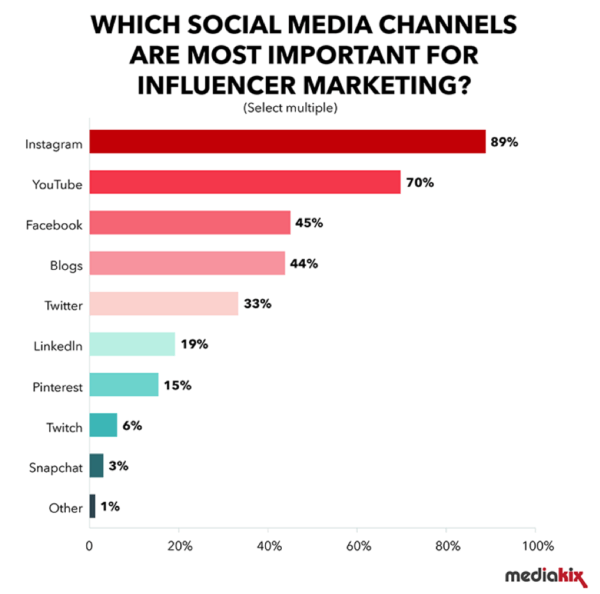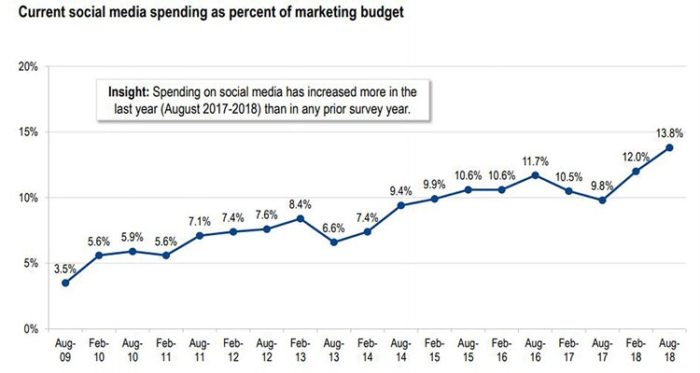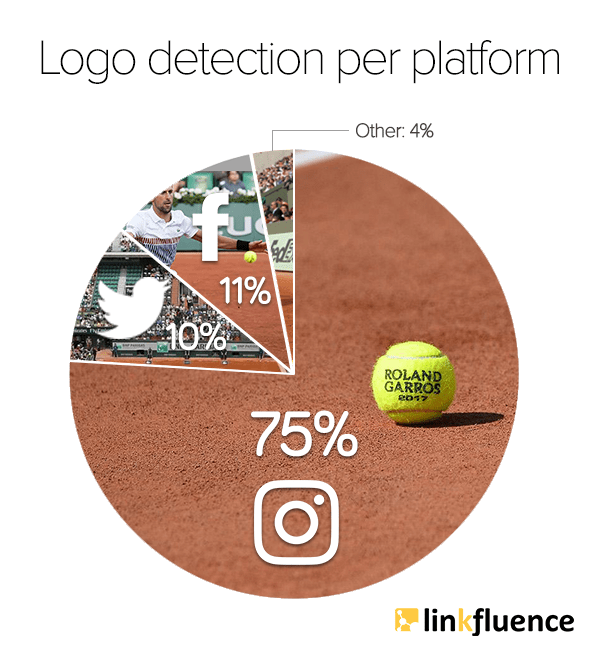Influencers are considered to be social media celebrities. With their many followers, it is the ideal marketing strategy for brands to gain exposure, boost reach and relevance, site traffic and brand awareness rather than making sales a priority (at first).
Companies spend big money on a single post, more than £67,000 on YouTube and over £75,000 on Facebook and Instagram. Whether these prices are justified, brands often overlook them despite 86% of marketers claiming they are unsure of how influencers calculate their fees.

Instagram (Facebook) and YouTube are the most relevant social media platforms for influencers.
Astonishingly, only three years ago, influencers were happy to collaborate in exchange for a product or service. Today, you’d be hoping for a miracle! Cosmetics brand Benefit paid the price in the new year of 2017, head of digital marketing Michelle Stoodley explains:
“Towards the start of [2017] the industry started to change a little bit and I think because brands are throwing so much money at some of these guys it’s very hard not to get involved in that space and to not pay”
Social media accounts for 13.8% of marketers’ overall budget and companies can no longer afford to invest in what is called “hope marketing”. The number of followers, likes and comments an influencer has is no longer the only determining factor for achieving a successful ROI.

Many Instagram accounts are fraudulent, populated with stock photography and followed by users bought for $3-$8 per 1,000. Therefore, selecting the right influencer requires background checks and is even more so determined by the kind of image and message a brand wants to broadcast.
Cereal brand Kellogg’s is no longer paying influencers solely based on their reach because it has no way of knowing whether that engagement is real or fake. Instead, the brand focuses on the influencer’s tone of voice, content, style and follower demographics before signing off.
“Fraudulent yet common practices like bought engagement have left marketers and the advertiser suspicious of what they buy from influencers”
Joseph Harper, Social Media Manager at Kellogg’s UK & Ireland
To avoid the risk, new image recognition technologies have emerged to find genuine users of a brand, product or service. One of these titans is called Linkfluence who detected that the tennis tournament Roland Garros was featured more on Instagram than any other social media platform.

With a wide set of data, brands can measure their ROI more accurately. Similarly, a company called indaHash connects businesses with mid-tier influencers with 1,000 to 100k followers that share the same values. An algorithm finds compatibility based on the client’s objectives and influencers, in turn, will send images that they can approve or disapprove.
“Brands need a lot of content for their consumers to absorb, so it’s about creating content that is fit for purpose and our influencers are used to creating content for social media platforms”
David Saunders, UK Business Director at indaHash
For frozen food retailer Iceland, building long-lasting relationships with mid-tier influencers has proven to be profitable. People know when celebrities are paid to do an ad. By recruiting mothers who go and do their groceries, it is more relatable and people trust the brand more.
“So while ROI is difficult, and I completely get that, all you need is to have longer-term relationships”
Andy Thompson, Head of Social Communications at Iceland
When all of the above is done right, the ROI from influencers is well worth it! According to a survey by influencer marketplace Tomoson, on average businesses were receiving a staggering $6.50 return for every $1 invested. Some triple that amount with a ROI of $20 or more!
Needless to say, influencers are an important part of brands marketing strategies nowadays. In the last year, we have seen influencers up their prices by 30-50%. The question is how much more are brands willing to pay for this kind of marketing before it reaches its peak?

